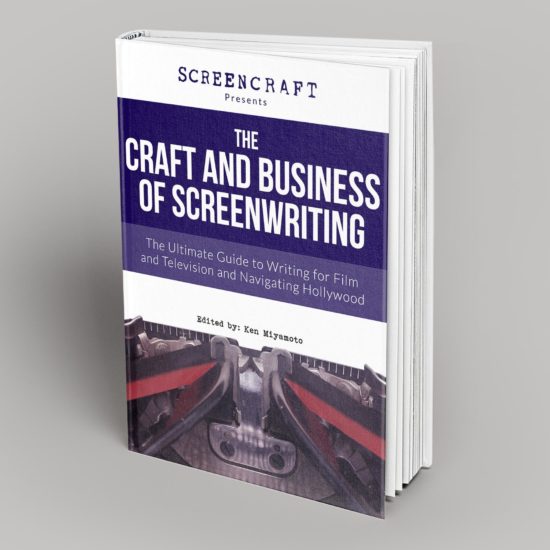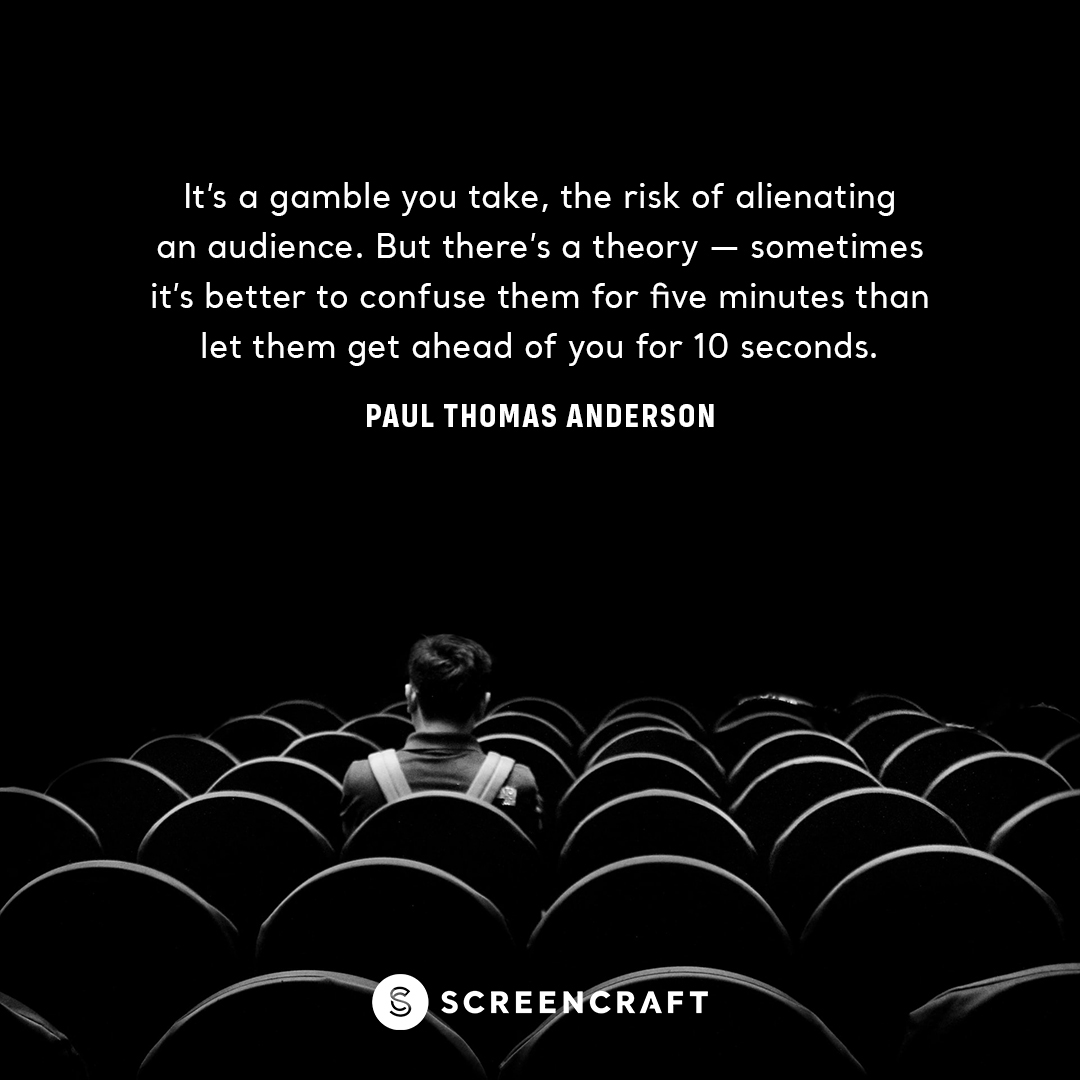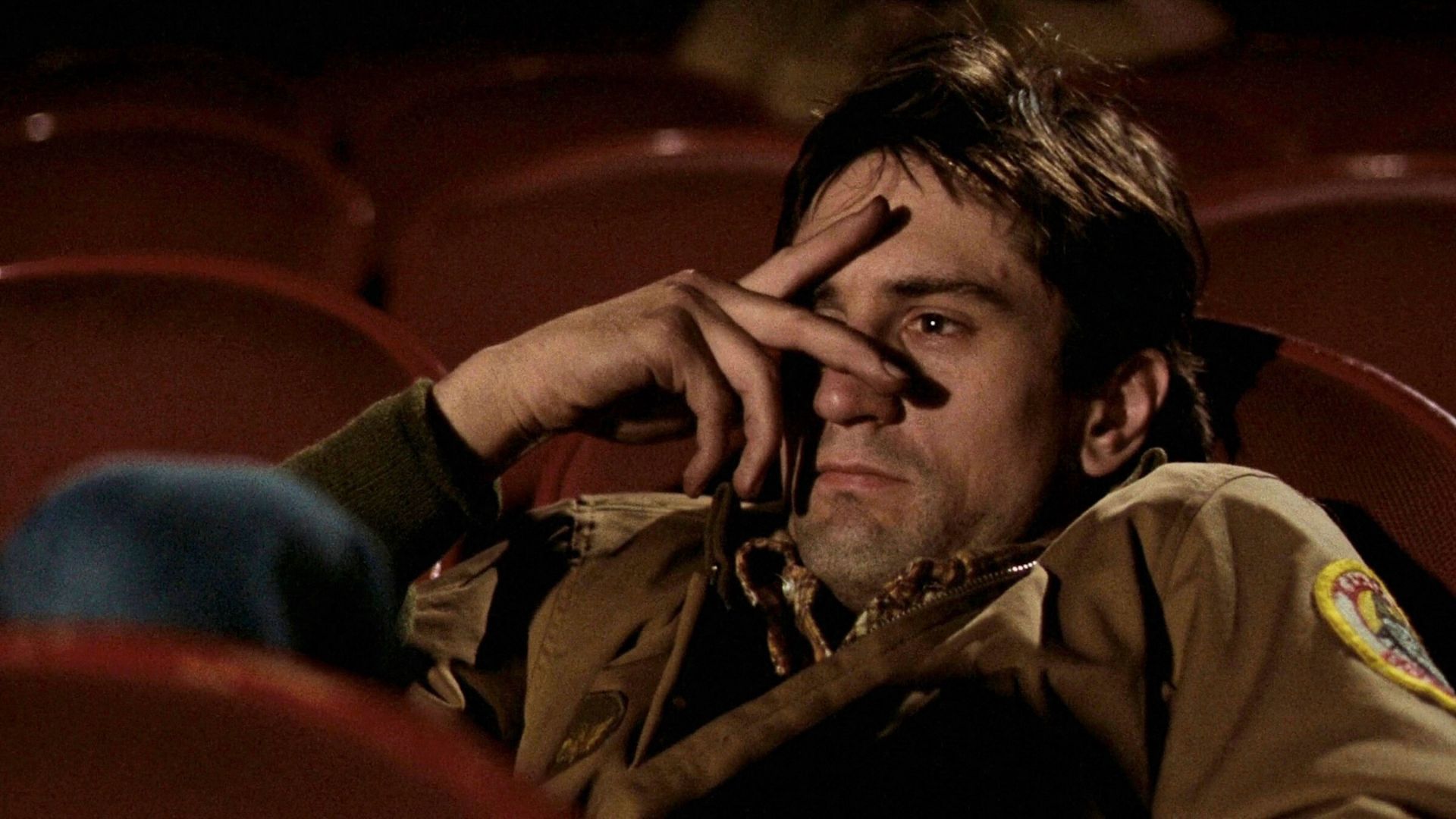
What can the screenplay of A Simple Plan teach screenwriters about writing tight, suspenseful, and engaging cinematic stories?
When three blue-collar acquaintances come across millions of dollars in lost cash they decide to keep their find from the authorities but find complications and mistrust weaving its way into their plan.
Screenwriter Scott B. Smith originally developed his story as a screenplay but decided to turn it into a novel first. He later adapted that novel into a script and took it out to Hollywood.
Read ScreenCraft's 5 Reasons Screenwriters Should Adapt Scripts into Novels!
Smith's journey with A Simple Plan as a potential feature film began after he had published a short story for The New Yorker. The magazine's fiction editor learned of Smith's then-unpublished novel. He quickly read it and forwarded the material to an agent. The novel eventually got into the hands of celebrated director Mike Nichols who was interested in purchasing the film rights.
Nichols purchased the rights for his production company Icarus Productions for $250,000 against an additional $750,000 if a studio were ever to produce it. Nichols later stepped away from the project due to scheduling difficulties. Smith's novel was optioned for development by Savoy Pictures.
Ben Stiller later joined the project. He spent nine months working on the script with Smith but during preproduction, Stiller had a falling out with Savoy over budget disputes.
In January 1995, John Dahl was announced as director, with Nicolas Cage set to star.
In November 1995, Savoy was later acquired by Silver King Broadcasting/Home Shopping Network. A Simple Plan was put up for sale. Both Dahl and Cage left the production amidst the shakeup.
Paramount Pictures purchased the project. Scott Rudin was attached to produce and he hired John Boorman to direct the film. This is when Bill Paxton and Billy Bob Thornton were cast.
Boorman was well into location scouting until a second investor left the project, leaving Paramount refusing to fully finance the $17 million production. Boorman found the financing, but due to more scheduling issues, he was forced to leave the production. Paramount then hired Sam Raimi to direct the film. Raimi saw it as an opportunity to direct a character-driven story that differed from his earlier works, which were primarily embedded in the horror genre.
But what is it about this script that has made the film stand the test of time as a cult classic?
Warning: Spoilers Below
Making the Source Material More Cinematic
Every adaptation has its necessary challenges and nuances as the story and characters are transferred from the literary platform to cinematic storytelling.
And despite the fact that Smith was the writer of both the novel and the screenplay, those tough choices still had to be made.
Certain visual changes were implemented. To make the discovery of the plane more cinematic, Smith choose to write a scene of a character throwing a snowball to uncover the plane, instead of the characters just walking past it, as was the case with the novel.

Character and story arcs often need to be shifted in adaptations as well.
The producer wanted the focus of the story to center on Hank and Jacob, which forced Smith to shorten the screenplay. Smith explained, "I had to work to make Hank a more rational character, less evil."
This offered audiences a more relatable character. Having Hank as an everyman of sorts allowed the audience to question what they would do in that situation — as opposed to having Hank be somewhat of a maniacal and greedy character.
Because Smith was asked to shorten his script, the character of Sarah — Hank's wife — had a much smaller role in the story, as was the case with Jacob as well. These changes served the story well, allowing the film to focus on a single character and how the supporting characters affected his decisions.
In a novel, writers have time to explore multiple character storylines in depth. But with screenplays, everything needs to be condensed — without affecting the core strength of the concept and story.
That's the true secret of adaptations — making everything more cinematic. A Simple Plan is a tight script draft that gets to the point and delivers on the core concept in quick fashion.
Finding an Ironic Title
Great titles are difficult to come by. While there are many ways to find that perfect title, A Simple Plan manages to accomplish that by finding the irony. The plan the characters concoct slowly becomes far less simple than they had originally intended. It's far from simple in the end. In fact, it's quite the opposite.
And that is why the title is so perfect in the end.
Read ScreenCraft's How to Write Screenplay Titles That Don’t Suck!
Introducing the Characters and Their World Quickly
Within the first couple of minutes, we understand the dynamics of the characters and the world they live in.
Hank is the quintessential good guy. He's a married family man with a baby on the way. And he leads a quiet simple life.
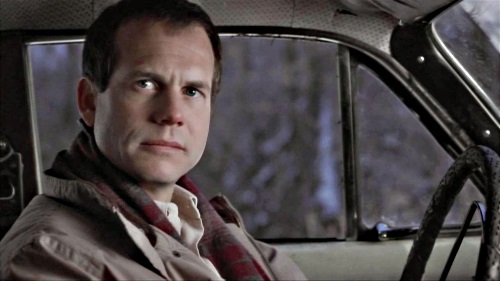
But he has a brother, Jacob, that brings a bit of chaos into the mix. A brother that is clearly below the social and intellectual capabilities of Hank.

To make matters worse, Jacob's best friend Lou comes into the pictures, rocking Hank's boat even more. He's just as socially and intellectually inept as Jacob, but he's also someone that challenges Hank and his uppity attitude.

This is all communicated within the first couple minutes of the film through visuals, actions, and the quick back and forth exchanges between the characters.
Never once does the script outright stipulate these details through bad expositional dialogue that you normally find in script's written by novice screenwriters. And the script doesn't spend the whole first act introducing these story and character dynamics either.
Learn how to master character names and movie titles with this free guide.
Getting to the Concept Quickly
Too many screenwriters spend the first act setting everything up. They introduce the characters and their worlds at length and then build to the introduction of the major conflict and core concept of the script.
If you're an established screenwriter with many produced credits, you can certainly get away with slow-burn scripts. However, when you're unknown and trying to sell or break through on spec (speculation that your screenplays will be options or purchased), you need to get to the concept within the first ten pages — if not the first five.
A Simple Plan does this masterfully. Before we know it, the characters have ventured into the woods, discovered a crashed plane, and found a bag full of $4.3 million in cash.
Evolving Conflict That Continually Raises the Stakes
Suspense stories live and breathe by the conflict the characters face. And the best ones bombard their characters with conflict after conflict. Things that certainly couldn't get worse evolve into even more dire situations.
The more conflict you have in your script, the more stakes there are. The more stakes there are, the more the audience will be on the edge of their seats.
A Simple Plan is one of the few suspense thrillers that accomplish this with little to no complicated plotting. It handles the raising of the stakes very simply.
They Discover the Plane and Money
Do they tell the authorities or do they keep the money for themselves?
Hank wants to do the right thing first, but Lou talks him into the decision to keep it for themselves. That's the first conflict — a conflict of morals.
Hank Says He'll Burn the Money if They Don't Follow His Plan
Hank is being smart. He wants to keep the money until the Spring Thaw. If nobody is looking for it, they can split the money. This is in direct conflict of what Lou wants to do, and Jacob is caught in the middle.
Jacob Makes a Mistake
After Hank's wife Sarah tells him that he should put some of the money back into the plane to through off anyone who comes looking for it, Hank and Jacob go to the site to do so.
However, a local farmer arrives as Hank is in the woods returning some of the money to the plane while Jacob stands watch near the road. Jacob tries to prevent the farmer from heading in the direction of Hank and the crashed plane, but his wits aren't as quick and smart as Hank's. He attacks the farmer in a moment of uncertainty — seemingly killing him (see more below).
Now there's a dead body to deal with.
Jacob Tells Lou About Their Secret
To Hank's dismay, Jacob tells Lou what has happened. This causes further conflict because now Lou can use that as blackmail to get access to the money that he needs now.
This catches Jacob in the middle of his brother and Lou. And Hank is wondering what side Jacob is on.
Hank and Jacob Try to Blackmail Lou
Hank's wife now suggests that they should counter-blackmail Lou, to keep him from going to the authorities about the murder of the farmer. If they can get Lou to false confess on tape, they can leverage that against him.
But it all goes bad when Lou discovers what they are doing, leading to Jacob killing Lou to protect his brother and Hank killing Lou's wife when she discovers what they've done and attempts to shoot Hank in her own perceived self-defense.
Now Hank and Jacob have to explain these two deaths to authorities. And Jacob is clearly suffering some internal turmoil after all he's done.
Someone Is After the Money
Just when everything seems to have fallen in place, we learn that an FBI agent investigating a lost plane may or may not be someone looking for the money.
This causes great panic and paranoia, leading to a major climax.
The writer endlessly bombards the characters with evolved conflict throughout the script — every few pages or so. And it's conflict that raises the stakes of the script each and every time.
When you're writing suspense thrillers, that's what it takes to keep the reader engaged and invested.
As we covered in ScreenCraft's Must-Read Analogy That Teaches “Raising the Stakes” in Screenplays, raising the stakes in your script is simple and easy — conflict. The more conflict you have and the more the characters have to lose as a result of that conflict, the more the stakes are raised. And the more the stakes are raised, the more invested readers and audiences will be in your story.
As you conjure these conflicts to throw at your characters, you need to ask yourself these questions:
- What do my characters stand to lose through the central conflict?
- What do they stand to gain?
- What is at stake (freedom, lives, relationships)?
- What are the consequences of each and every action they take in reaction to the conflict at hand?
The answers to those questions will come after you’ve introduced the next conflict that they are forced to deal with. As you keep adding more and more, those answers will get better and better. Before you know it, you’ll have a screenplay that has significant stakes from beginning, middle, to end.
Giving the Wife (and Any Key Supporting Character) Something to Do
While Hollywood is making strides to offer better roles for women, we still see the cliche wife role in male-centered movies. They are often forced to the sidelines, having no true integral role in what happens within the plot.
Thankfully, A Simple Plan is an excellent example of how to give that type of character more depth and meaning.
Sarah is the quintessential small-town wife at first. She loves her husband. She's expecting a child.
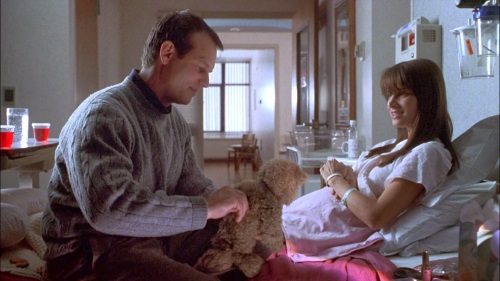
She works at a library. She comes home and cooks dinner after her shift.
She's even the voice of reason for Hank at first, which is also an overly-used cliche in film.
But once the plot starts to thicken, she actually plays a central role in how the stakes are raised.
- She's the one who suggests that Hank return some of the money, which leads to Jacob and Hank killing the farmer.
- She's the one who suggests that Hank counter-blackmail Lou, which leads to Jacob and Hank killing Lou and his wife.
- She's the one who suggests that the FBI agent could possibly be a fake, posing as an agent to get to the money, which leads to the final climactic sequence.
Without these suggestions and actions, and many more not mentioned, the conflict isn't enhanced and the stakes aren't raised.
This is less about rewriting the cliche wife role and more about offering supporting characters (male or female) something to do that is pivotal to the central conflict, story, and plot.
Every character in your screenplay has to be there for a reason. That reason may be big or small, but they can't be written in simply to fill space. If they don't need to be in the script, maybe you should be writing them out of it. But if they are important enough for you to keep them, make sure you give them a purpose.
Every Page Counts
All of these character and story elements are laid out quickly within the script and eventual film. The quick pacing of the script moves the story along at a rapid pace, which enhances the suspense. Just when we think Hank has worked things out, something goes wrong right away. Just when we believe he's solved that problem, it gets even worse.
The tension caused by the conflict and stakes rises to a boiling point, thanks in due part to every script page (and minute of film) counting. The writer wastes no time in taking us to the next twist or turn.
Far too many screenwriters feel the need to build to a moment — or they take their time between plot shifts to inject style or character development. Character development is best built through conflict. A character's actions and reactions dictate their depth.
In A Simple Plan, every page of the script and every cinematic moment within the film counts. Not one moment is wasted. That's how every screenwriter should approach their script.
Injecting Unexpected Twists
When you're writing in any genre, unexpected twists are a welcome surprise to any reader or audience member. That's what makes the story memorable in the end.
We won't spoil it fully here, but what happens may have been lingering in our minds throughout the movie, but most wouldn't have expected the story to go where it does.
Not Being Afraid of Unhappy Endings
Sometimes a film doesn't always have to have that happy ending, despite the endless terrible notes that screenwriter's receive in coverage.
Tragedy is often one of the most cathartic experiences to leave audiences with. It's unsettling.
You don't always have to have your protagonists get what they want in the end. In fact, it's more interesting to see the many ways that they don't get what they want. That's compelling storytelling.
A Simple Plan is an excellent example of how a suspense thriller should be written — especially in today's script market. It's tight, focused, and wastes no time getting to the characters, their world, the concept, the multiple conflicts, and the many twists and turns.
Ken Miyamoto has worked in the film industry for nearly two decades, most notably as a studio liaison for Sony Studios and then as a script reader and story analyst for Sony Pictures.
He has many studio meetings under his belt as a produced screenwriter, meeting with the likes of Sony, Dreamworks, Universal, Disney, Warner Brothers, as well as many production and management companies. He has had a previous development deal with Lionsgate, as well as multiple writing assignments, including the produced miniseries Blackout, starring Anne Heche, Sean Patrick Flanery, Billy Zane, James Brolin, Haylie Duff, Brian Bloom, Eric La Salle, and Bruce Boxleitner. Follow Ken on Twitter @KenMovies
For all the latest ScreenCraft news and updates, follow us on Twitter, Facebook, and Instagram.
Tags
Get Our Screenwriting Newsletter!
Get weekly writing inspiration delivered to your inbox - including industry news, popular articles, and more!






